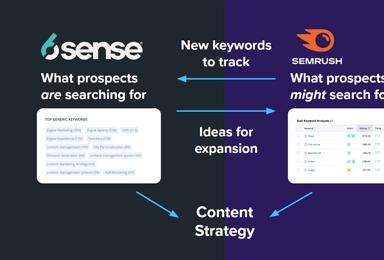Who owns user experience in an organization?
If you asked 10 people in an organization – “Who is responsible for user experience in your company?” – you’d probably get 10 different answers. And at least one of those answers might be, “I don’t know.”
In comparison, if you asked who was responsible for the design of a product, it would be easy to get a clear picture of who owned what pieces. Same goes for development or product management. So why is UX different?
While it’s arguably the most vital part of developing a product, companies often pass the buck when it comes to defining the internal champion for user experience. It might be that no one feels qualified. In other cases, there might be a UX team, rolled into a larger marketing or product department, where it sinks to the bottom of a very long list of concerns. Or sometimes, UX becomes muddled with UI, and the roles responsible for each aren’t clearly distinguished.
Even small investments in UX can have big impacts, so in an ideal world, companies would see its value enough to give it a seat at the big kids’ table. Over the past several years, some larger operations have put Chief Experience Officers (CXO) in charge of leveraging best practices in design and UX to gain market share. But since most don’t have the luxury or the mentality (yet) to dedicate specific leadership positions to UX, what happens in the meantime?
In the meantime, we improvise. There are people all over the organization doing it already, and each brings a unique perspective. Here are some common roles who may be driving user experience forward, for better or for worse, and how they can use their unique skills to make it become a larger part of the conversation – no matter where they sit.
The CEO
Why a CEO may own user experience:
In a startup or small company, the CEO may own UX. The business was his or her idea, so they care deeply about making sure their product works well and that the customers are happy. The CEO is also the one person who can ingrain a UX-focused philosophy into a corporate culture.
The challenges:
The CEO has a million things to do and oversee. Operations, sales, personnel—it’s all on their plate. He or she may not always have the time to ensure products are well tested or users are consulted. And pressure for lightning-speed product launches often supercedes thoughtful UX.
How a CEO can improve the UX in his organization:
By creating a culture that values UX at every level, user experience becomes embedded it into all core processes of a company. By making UX a priority for leadership, and hiring the right people, it’s easier for the CEO to hand off smaller tasks and just focus on the big UX.
The Product Manager
Why a product manager may own user experience:
If you understand the product, and you understand the audience, it’s likely you have a grasp on how the UX should feel. In many companies, this is why UX falls under a product team. A good product manager should be the last line of defense against shipping a subpar product.
The challenges:
The UX owner needs to be empathetic to the needs of their audience, and that can be difficult when they are also responsible for looking after the needs of the business, it’s one of many things the product manager has to consider, including the product being priced correctly for the market, accessible to the audience, supported operationally and finally, performing as promised.
How a product manager can improve the UX in her organization:
A product manager may not have the bandwidth to give UX their full attention. However, they should be able to empower their team to understand the buyer and the problem to solve. They can define the metrics and usability requirements, but allow the UX designer to step in and create the wireframes, user flows, and other key deliverables needed to get to the correct answer. For a product manager, it’s about setting up the proper foundation so the the entire team is able to discover a UX solution.
The Engineer
Why an engineer or developer may own user experience:
In tech companies, UX may fall on the engineering team to own. And if the product is technical, leadership may believe that the people building it are best-suited to make the user happy.
The challenges:
When an engineer is driving the UX, the focus can become very specific and feature-based. It’s all about the what, not the why. A common pitfall is spending too much time and attention on the details of the product, and the big picture is overlooked. As the proverb goes, “They can’t see the forest but for the trees.”
How an engineer can improve the UX in his organization:
If UX belongs to the development team, it’s important to elect a single person to look at the big UX, making sure all the features fit together for a successful user experience. Some companies have found a UX Engineer for this role—a designer and developer wrapped up in one amazing package—who won’t get entangled with behind-the-scenes technical thinking.
The Whole Team
Why a team may own user experience:
Smaller companies and start-ups often try a consensus-driven approach to UX. A small organization may want to consider all opinions before making a decision.
The challenges:
When everyone is giving input, ownership of UX becomes muddy and unclear. When a product launch goes well, the entire team is happy to accept the awards. But when it goes poorly, no one is willing to take the blame.
How a whole team can improve the UX in their organization:
Getting input from everyone is great. It could even be considered a basic form of user testing. But without basing decisions on data and experience, and having a clear identity of who is responsible for the UX, it’s an equation for disaster. Designating a single person, whether it be the CEO or a product manager, to make the final UX decisions is key, and then get the team involved to give their thoughts as needed.
The Marketing/Brand Manager
Why a marketing/brand manager may own UX:
A marketing or brand manager understands the message and voice of the company better than anyone else. In theory, UX may sound like a simple extension of these roles.
The challenges:
A marketing manager is often concerned with selling the brand in a traditional sense—getting the proper reach and frequency; getting the name “heard.” A marketer’s role is focused on how many eyeballs are seeing the product, not necessarily if all those eyeballs are happy. A brand manager focuses on the identity of a company, and has a goal for the brand to look and feel a certain way. Thinking about how the user interacts with the brand is a more challenging piece to comprehend.
How a marketing/brand manager can improve the UX in her organization:
A marketing or brand manager has a benefit in that they understand a change in UX will impact the overall identity of a brand. Their opportunity is digging into the data to determine what UX improvements can make the biggest impact. If they can show the actual monetary impact, through selling more units, or having a more positive brand perception that causes more people to use a product, it will be easier to sell a UX philosophy company-wide.
The UX/UI Designer
Why a UI designer may own user experience:
In some companies, the roles of UI and UX get combined, often to the detriment of the user experience. If an organization is confusing user interface design for UX design, UX wounds up being owned by a creative individual or team.
The challenges:
When pure visual designers drive UX, it becomes the same thing as UI. But, UX ≠ UI. For a more traditional designer, the challenge will be making decisions based on the needs of the user, without decorating or creating unique conventions in order to be innovative.
How a UI designer can improve the UX in her organization:
A true UX designer looks at the data and analytics, user flows and customer journeys, and is constantly testing iterations when working on a project. How it looks is important, but it’s secondary to how it feels. While the rare designer can do both UX and UI well, someone doing both roles should clearly define their role and what parts belong to UX or UI. Additionally, a UI designer should make it their mission to become a UX design expert. Reading, research and testing, and following experts in the industry is a good place to start.
In many organizations, the reality is there isn’t a CXO around to own UX. While some positions are better suited to manage UX than others, each role should be thinking about how to enhance the user experience in their organization. Defining who owns the UX, no matter what team they fall under, is a good place to start.

